

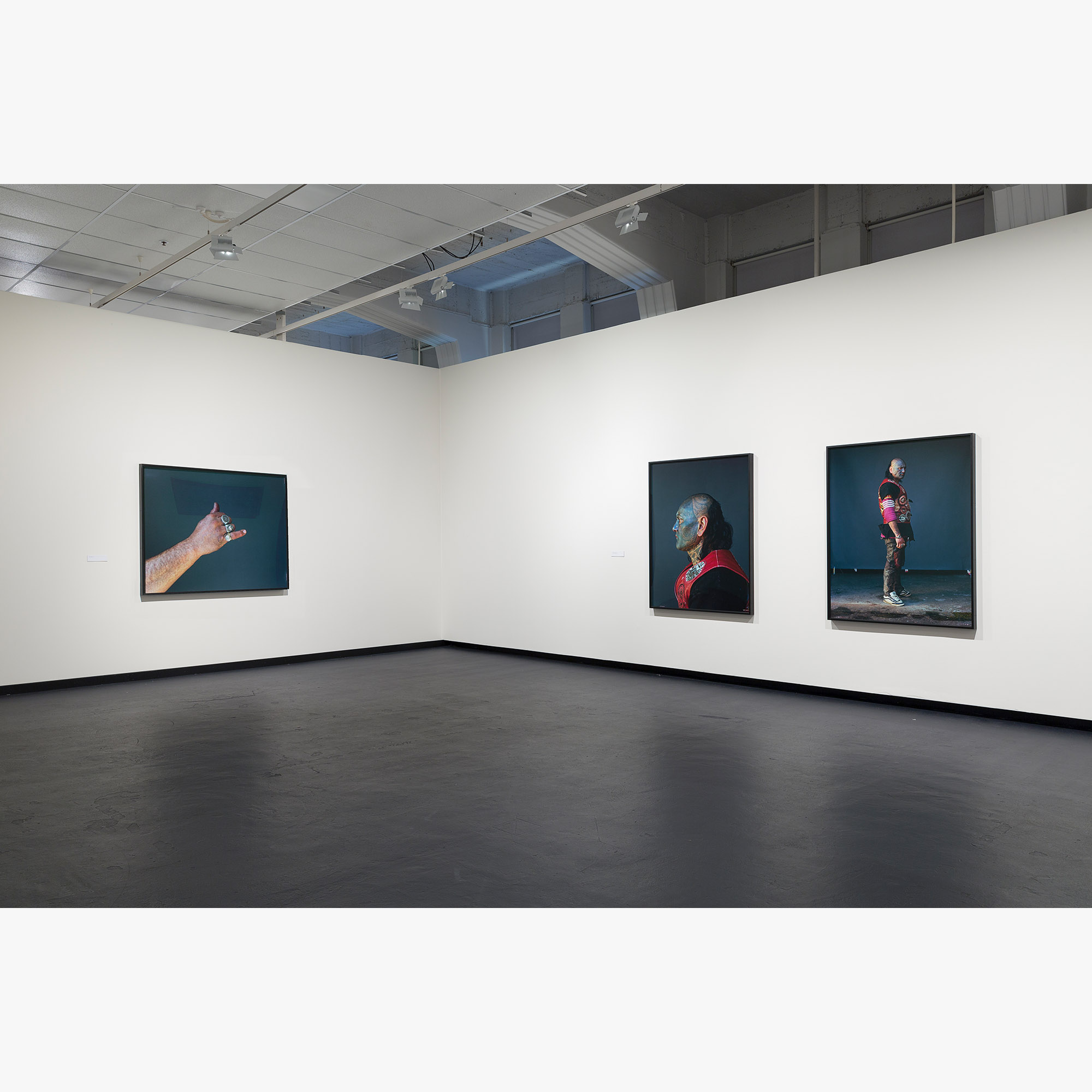

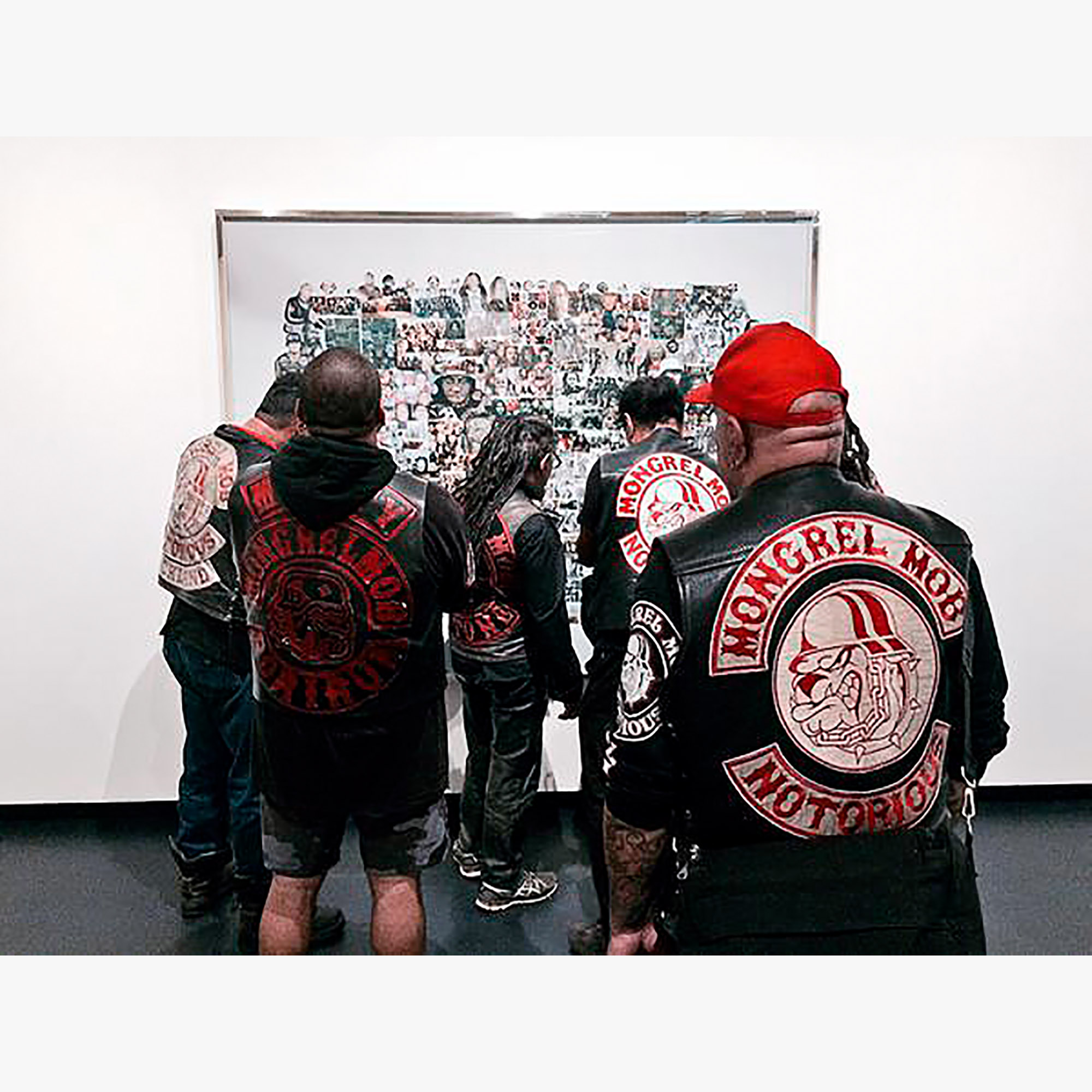




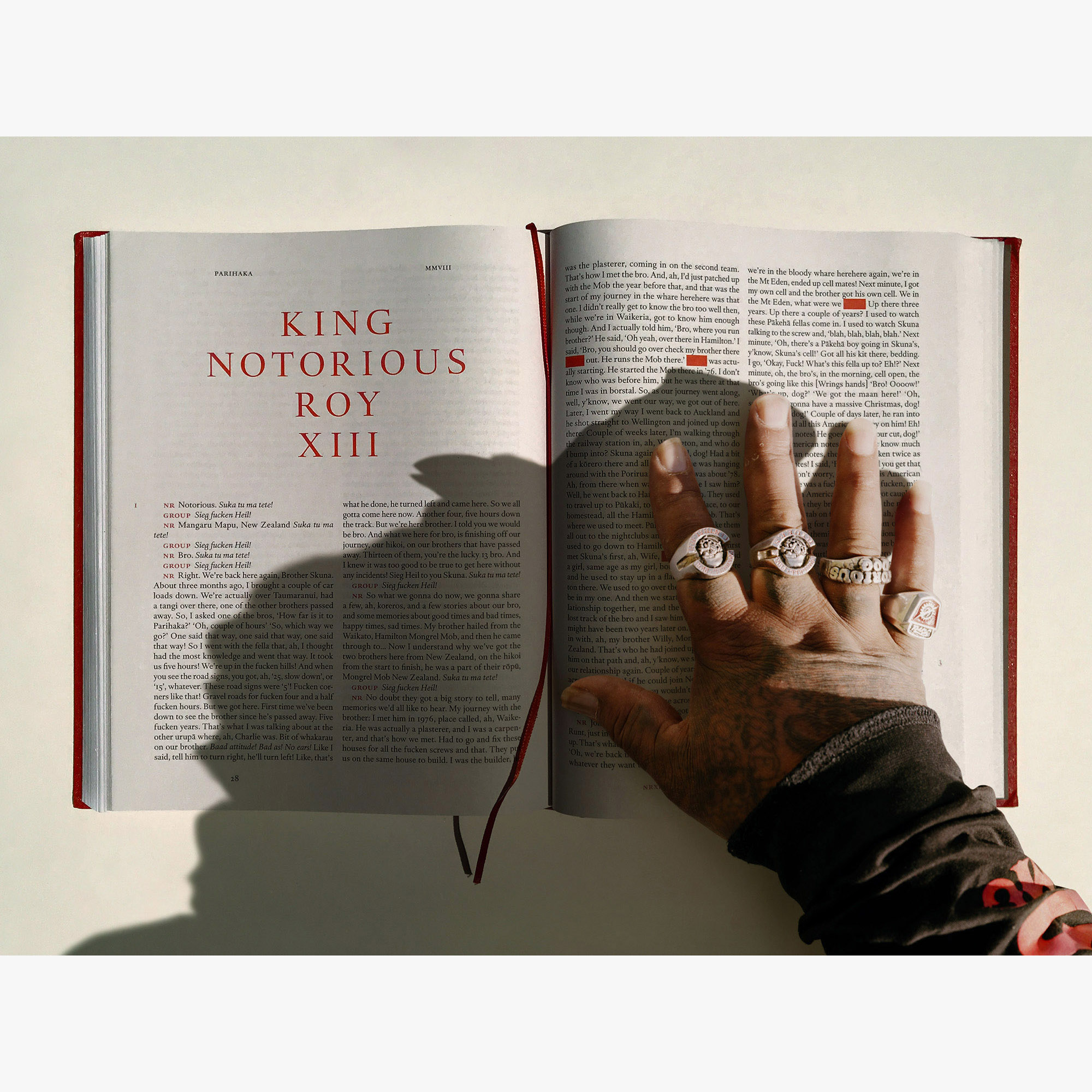
MONGRELISM
“One of the functions of art is to transmit a reality that might be marginalised or missed in the cacophony of glib stimuli vying for our attention. Jono Rotman has carefully, respectfully insinuated himself into the culture of gangs, earning their trust. That trust is embodied in his portraits. His subjects’ faces, tattoos, and insignia signify their alienation and marginalisation from mainstream society. The image of gangs portrayed to the general public is the incarnation of the white man’s worst nightmare, the emergence of a threatening monster from the ashes of the ‘noble savage’ portrayed by Lindauer and Goldie. These portraits challenge us to ask: what are the hidden and untold stories that underlie them?"
2015 / Essay / Dr. Ranginui Walker / Jono Rotman; Mongrel Mob Portraits / A City Gallery Publication
“Rotman works to strip away this generalised, media-generated image of gang identity. He uses the camera not to safely present or titillate normalised society with its criminal other but to set up a direct and confrontational encounter with a specific individual. Rotman goes through this encounter ahead of his audience.....These photographs have claimed and been granted an active role within the community they represent. It’s here that Rotman’s photographs do their work, as well as on the walls of art galleries, and, through this clash, on culture at large.”
2015 / Essay / Aaron Lister / Jono Rotman; Mongrel Mob Portraits / A City Gallery Publication
2015 / Video / Mongrel Mob Portraits Opening Powhiri
2014 / Television / The faces of the Mongrel Mob – still art for art’s sake? & Mongrel Mob photographer refuses grieving father's plea / TVNZ Seven Sharp
“The gravest threat our society faces is from cowardly artists. I realised just how much danger we were in this week while reading about a photographer named Jono Rotman.”
2014 / Opinion / Narelle Henson / Waikato Times
The Mighty Mongrel Mob of Aotearoa New Zealand are mythologised for extreme violence, and they have long been cast as the nation’s monsters. Mongrelism offers a communion with this impenetrable fraternity. Monumental portraits illustrate Mob members’ assertion of membership and pride in their identity. Artifact studies and brutal first person narratives are drawn from the Mob corpus, mirroring the landscape studies that bare the brooding environments where Mob members live. Mongrelism examines how the gang brands itself to itself to uphold its hierarchy and history, and finds core values usually lauded by society: perseverance, resilience, and loyalty.
Email to view catalogue.
Mongrelism Book
2016 / Mongrel Mob Portraits / Gow Langsford Gallery / Auckland, Aotearoa New Zealand
2015 / Mongrel Mob Portraits / City Gallery / Wellington, Aotearoa New Zealand
2015 / Personalities: Fantasy and Identity in Photography and New Media / Palm Springs Art Museum, Palm Desert, USA
2014 / Mongrel Mob / Gow Langsford Gallery / Auckland, Aotearoa New Zealand
“One of the functions of art is to transmit a reality that might be marginalised or missed in the cacophony of glib stimuli vying for our attention. Jono Rotman has carefully, respectfully insinuated himself into the culture of gangs, earning their trust. That trust is embodied in his portraits. His subjects’ faces, tattoos, and insignia signify their alienation and marginalisation from mainstream society. The image of gangs portrayed to the general public is the incarnation of the white man’s worst nightmare, the emergence of a threatening monster from the ashes of the ‘noble savage’ portrayed by Lindauer and Goldie. These portraits challenge us to ask: what are the hidden and untold stories that underlie them?"
2015 / Essay / Dr. Ranginui Walker / Jono Rotman; Mongrel Mob Portraits / A City Gallery Publication
“Rotman works to strip away this generalised, media-generated image of gang identity. He uses the camera not to safely present or titillate normalised society with its criminal other but to set up a direct and confrontational encounter with a specific individual. Rotman goes through this encounter ahead of his audience.....These photographs have claimed and been granted an active role within the community they represent. It’s here that Rotman’s photographs do their work, as well as on the walls of art galleries, and, through this clash, on culture at large.”
2015 / Essay / Aaron Lister / Jono Rotman; Mongrel Mob Portraits / A City Gallery Publication
2015 / Video / Mongrel Mob Portraits Opening Powhiri
2014 / Television / The faces of the Mongrel Mob – still art for art’s sake? & Mongrel Mob photographer refuses grieving father's plea / TVNZ Seven Sharp
“The gravest threat our society faces is from cowardly artists. I realised just how much danger we were in this week while reading about a photographer named Jono Rotman.”
2014 / Opinion / Narelle Henson / Waikato Times
The Mighty Mongrel Mob of Aotearoa New Zealand are mythologised for extreme violence, and they have long been cast as the nation’s monsters. Mongrelism offers a communion with this impenetrable fraternity. Monumental portraits illustrate Mob members’ assertion of membership and pride in their identity. Artifact studies and brutal first person narratives are drawn from the Mob corpus, mirroring the landscape studies that bare the brooding environments where Mob members live. Mongrelism examines how the gang brands itself to itself to uphold its hierarchy and history, and finds core values usually lauded by society: perseverance, resilience, and loyalty.
Email to view catalogue.
Mongrelism Book
Exhibitions
2017 / Prix du Livre Images Vevey / Vevey, Switzerland2016 / Mongrel Mob Portraits / Gow Langsford Gallery / Auckland, Aotearoa New Zealand
2015 / Mongrel Mob Portraits / City Gallery / Wellington, Aotearoa New Zealand
2015 / Personalities: Fantasy and Identity in Photography and New Media / Palm Springs Art Museum, Palm Desert, USA
2014 / Mongrel Mob / Gow Langsford Gallery / Auckland, Aotearoa New Zealand

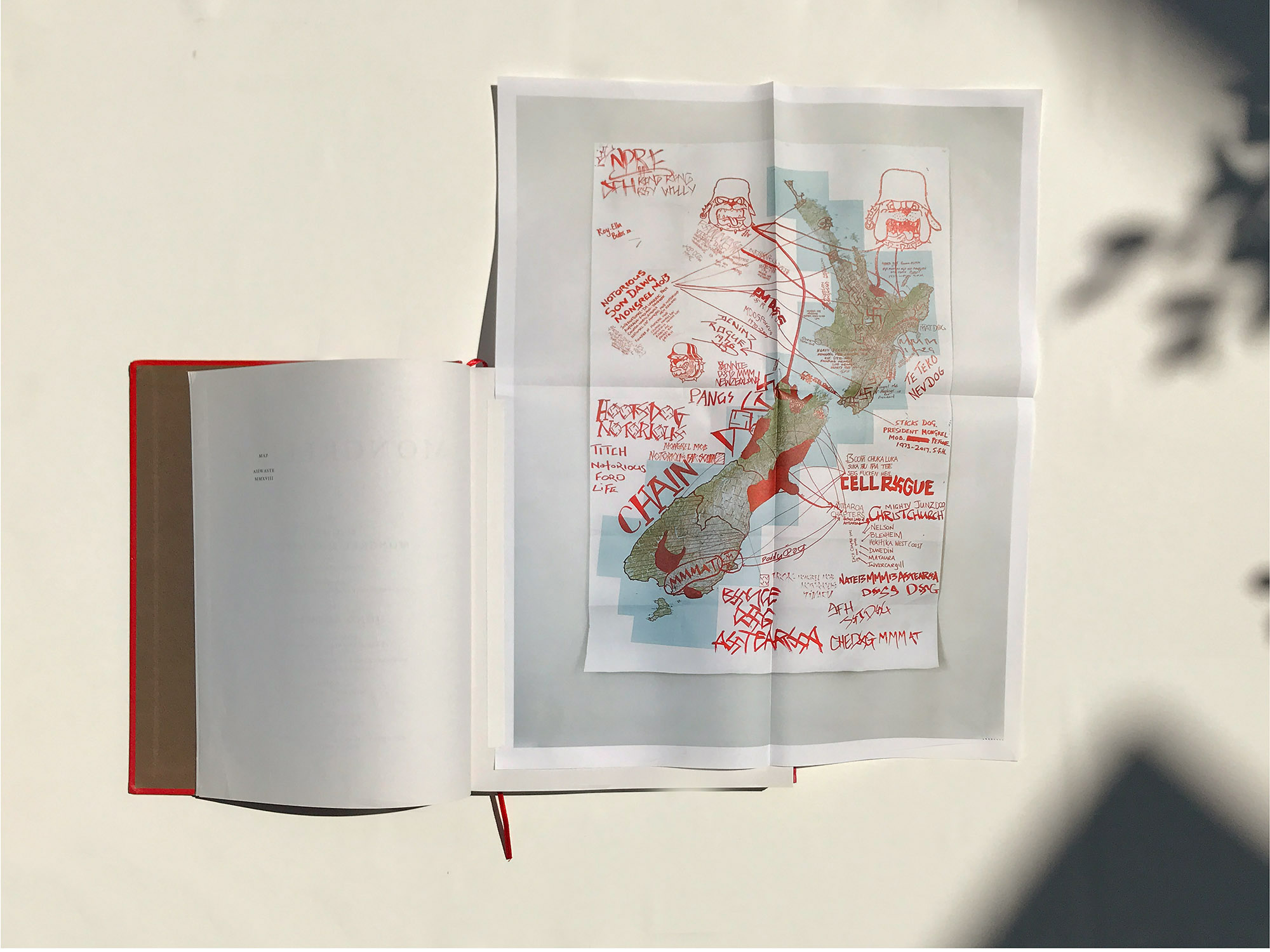

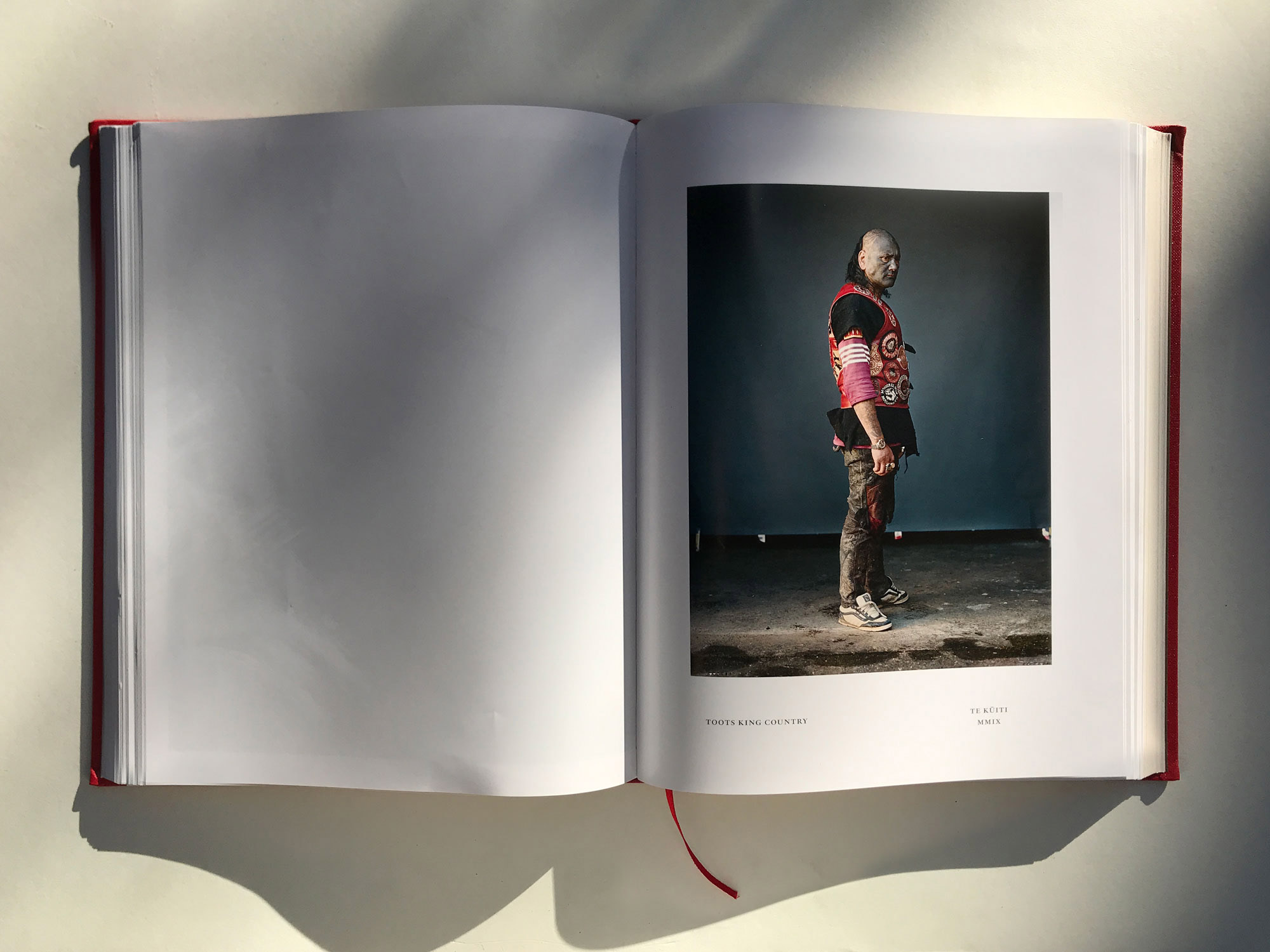


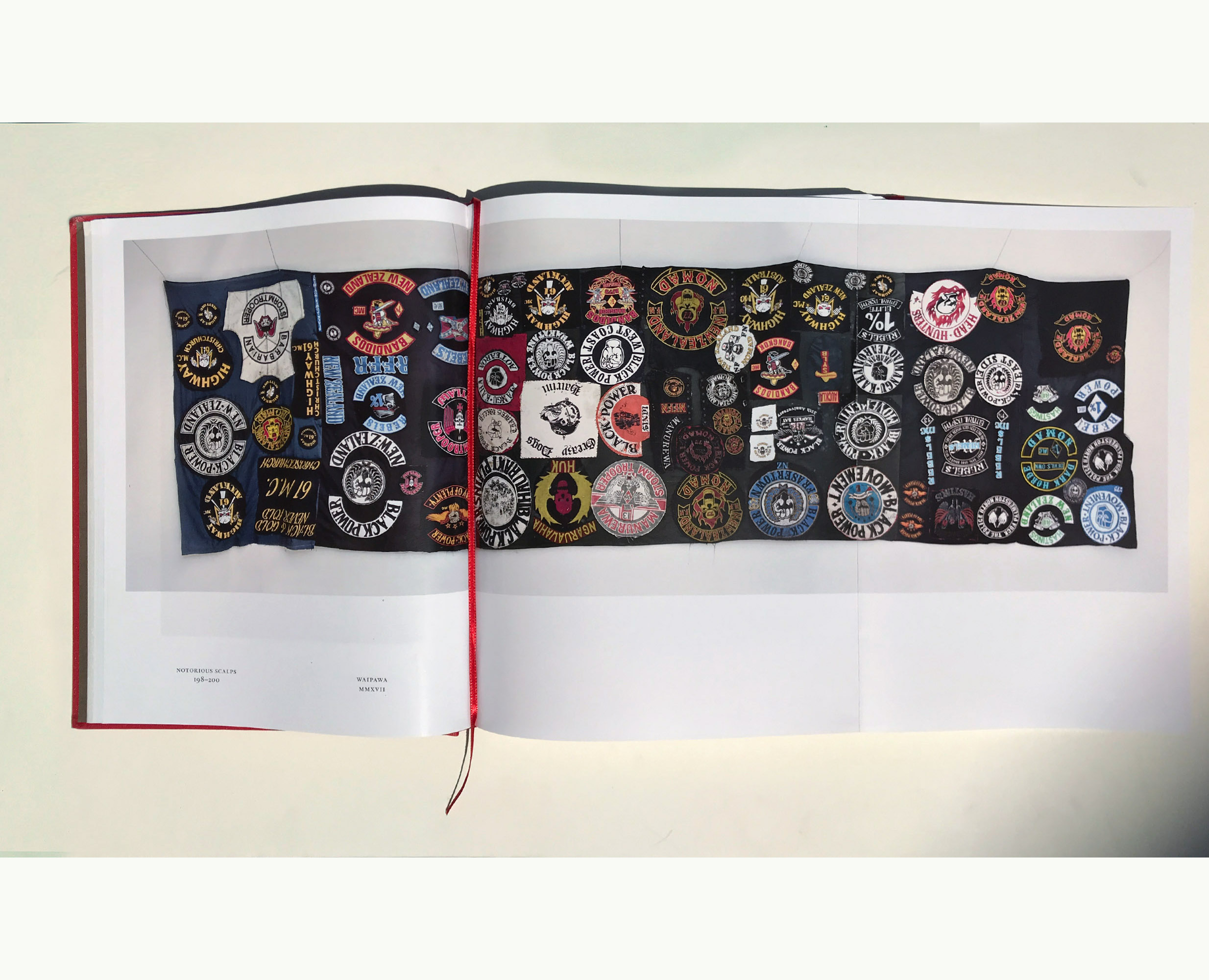

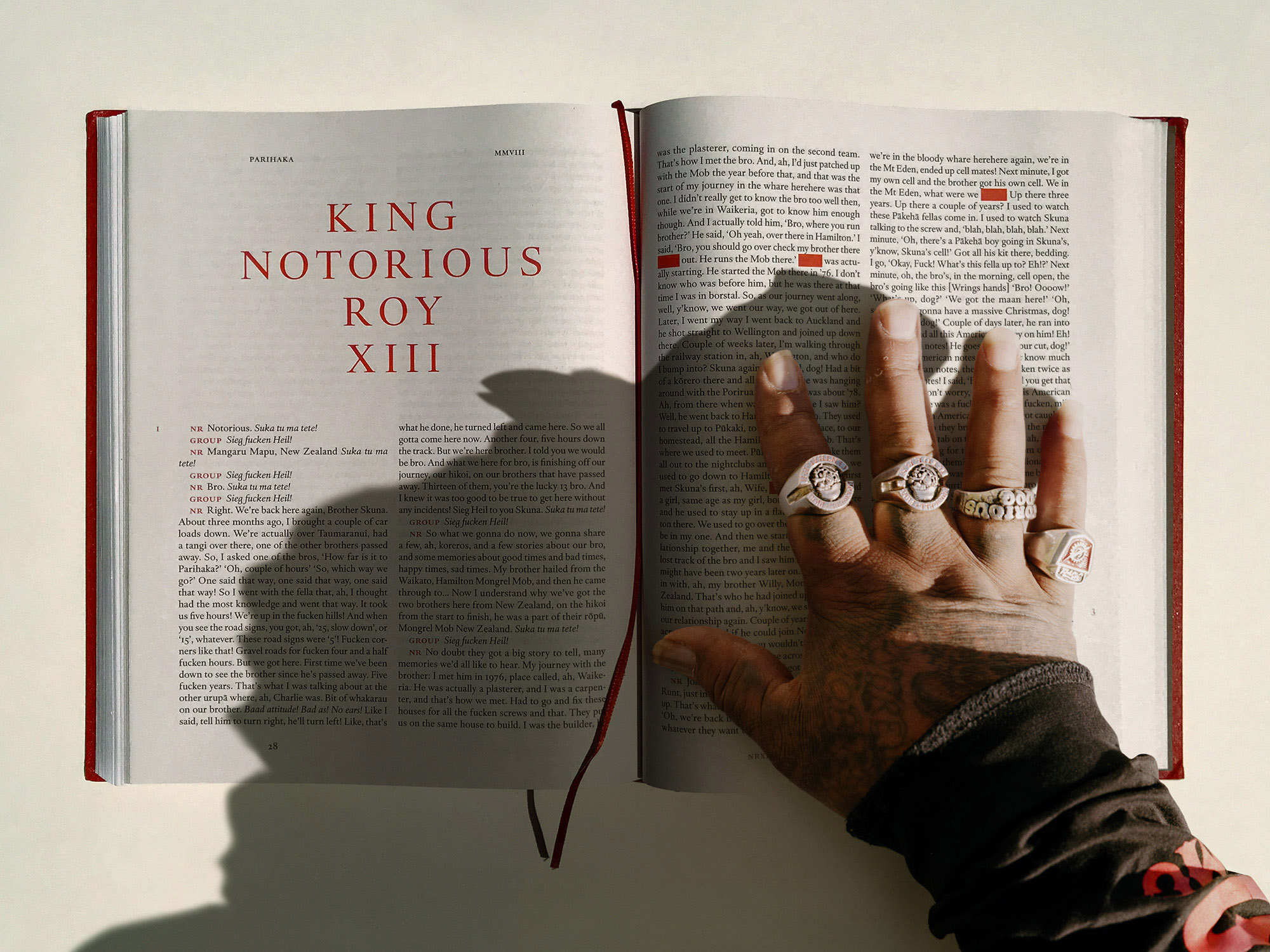
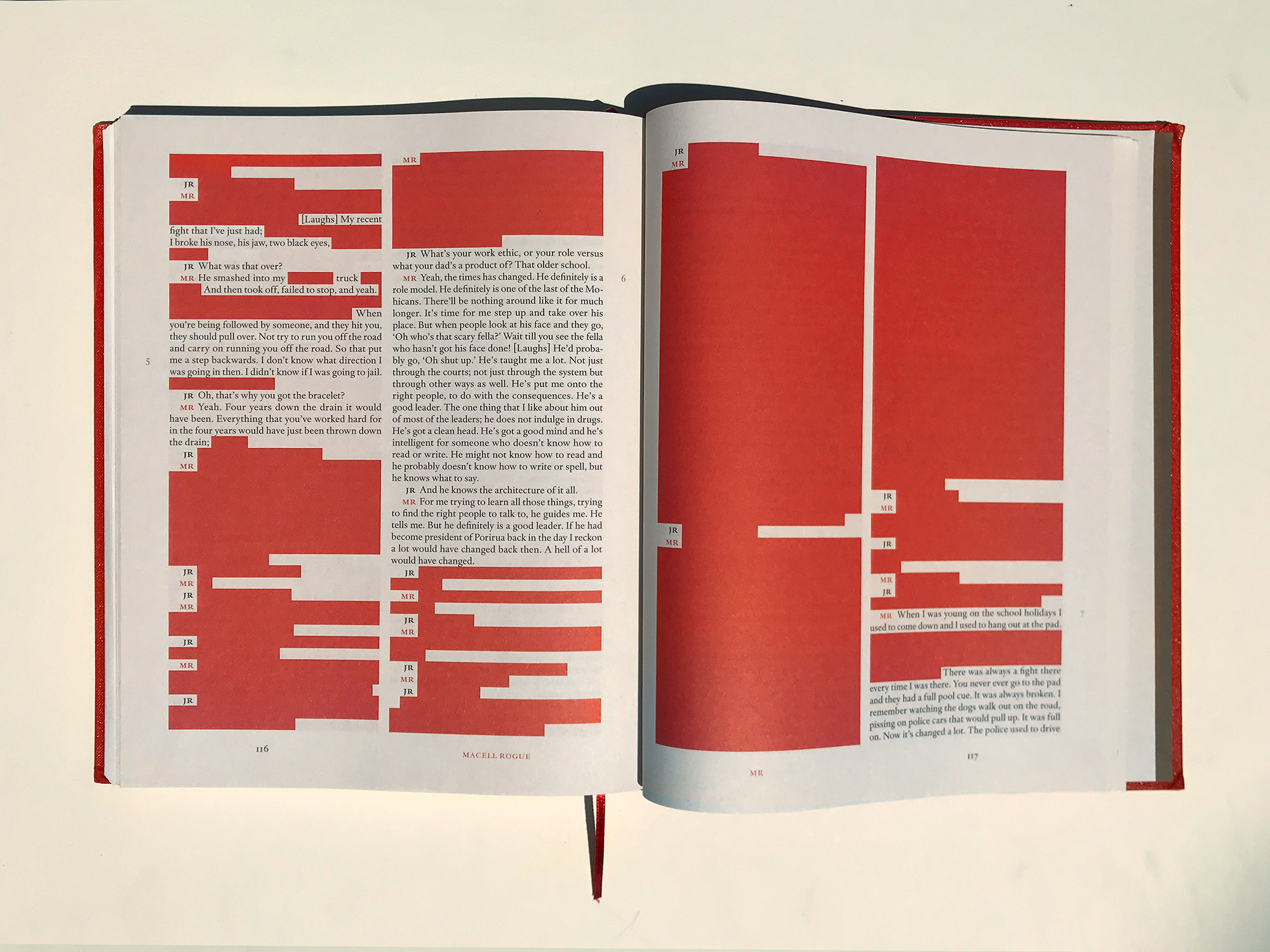

MONGRELISM BOOK
“Mongrelism is a taonga among photobooks in Aotearoa.”
2019 / 01 Sep / Review / Peter Black / PhotoForum
205 x 260 mm, 380pp
152 photographs
Text: 16 ‘barks’, 2 hakas and 1 waiata
Photography by Jono Rotman
Transcripts by Jono Rotman
Offset lithoprint on coated and uncoated paper
Library buckram cased hardback, with tipped in foiled illustration on library buckram
2 gatefolds, 3 tipped in fold-outs
Co-published by Here Press, London and Images Vevey, Switzerland
Edition of 1500
ISBN: 978–0–9935853–8–8
The publication takes the form of a gang handbook. The order and grouping of images is the result of consultation with members and hews to their geographic, familial, and hierarchical relationships. An unedited Mob voice dominates the written section.
“Mongrelism is a taonga among photobooks in Aotearoa.”
2019 / 01 Sep / Review / Peter Black / PhotoForum
205 x 260 mm, 380pp
152 photographs
Text: 16 ‘barks’, 2 hakas and 1 waiata
Photography by Jono Rotman
Transcripts by Jono Rotman
Offset lithoprint on coated and uncoated paper
Library buckram cased hardback, with tipped in foiled illustration on library buckram
2 gatefolds, 3 tipped in fold-outs
Co-published by Here Press, London and Images Vevey, Switzerland
Edition of 1500
ISBN: 978–0–9935853–8–8
The publication takes the form of a gang handbook. The order and grouping of images is the result of consultation with members and hews to their geographic, familial, and hierarchical relationships. An unedited Mob voice dominates the written section.





ŌMARUNUI
“... to see the complex layers of history; even to consider contemporary geo-political activities wherein monuments are destroyed and dominant narratives are revised and rewritten. It draws us into a dialogue that helps move us past the binary propositions of good and bad, rebel and loyalist.... to squeeze the festering historical pus of a century and a half of grievance and hurt out of the tribal corpus. With decaying matter removed from our wounds - and there clearly are wounds - the living flesh is encouraged to regenerate and reconnect.“
2016 / Narrations and Perspectives / Denis O'Rielly
“...the photographic residue of an event ... that has played its part in creating the ‘natural order’ of our condition in contemporary Aotearoa. ... the remnants of such events are real, and continue to fill our prisons and psychiatric hospitals. It is the natural order of things, unless we have the audacity to change them.“
2016 / The Natural Order of Things / Brett Graham
On October 12th 1866, 200 militiamen and a similar number from local hapū surrounded a party of approximately 100 Pai Mārire followers encamped at Ōmarunui pā, mainly comprised of Ngāti Hineuru. After an ambigous response to an invitation to surrender, the occupied kāinga was besieged. Many Ngāti Hineuru were killed with the balance taken prisoner and exiled to Rēkohu, along with whānau who were taken prisoner at Herepoho near Pētane. Those events and the subsequent outcomes remain contentious; conflicting perspectives endure.
Photography was as an integral part of the colonial machinery. These works examine glass-plate negatives from the national archives. Because of the complex interplay that led to the negatives being made, these tarnished pieces of old glass offer a refracted view of the folding together of Māori and Pākehā.
One image is of a stone obelisk. In 1916, on the day of the 50th anniversary of the events, a memorial was unveiled. The 7ft obelisk was deliberately knocked off its pedestal in the 1990’s. Today, this corroded and prone power symbol holds that violent events are not contained or neutered by the passage of time.
The work was exhibited on the 150th anniversary of the events at Ōmarunui.
Email to view catalogue.
2016 / Essay / Ōmarunui: Artist Statement and He Kupu Whakamihi / Jono Rotman
2016 / Opinion / Matthew Mullany: Looking back to look forward / Hawkes Bay Today
“... to see the complex layers of history; even to consider contemporary geo-political activities wherein monuments are destroyed and dominant narratives are revised and rewritten. It draws us into a dialogue that helps move us past the binary propositions of good and bad, rebel and loyalist.... to squeeze the festering historical pus of a century and a half of grievance and hurt out of the tribal corpus. With decaying matter removed from our wounds - and there clearly are wounds - the living flesh is encouraged to regenerate and reconnect.“
2016 / Narrations and Perspectives / Denis O'Rielly
“...the photographic residue of an event ... that has played its part in creating the ‘natural order’ of our condition in contemporary Aotearoa. ... the remnants of such events are real, and continue to fill our prisons and psychiatric hospitals. It is the natural order of things, unless we have the audacity to change them.“
2016 / The Natural Order of Things / Brett Graham
On October 12th 1866, 200 militiamen and a similar number from local hapū surrounded a party of approximately 100 Pai Mārire followers encamped at Ōmarunui pā, mainly comprised of Ngāti Hineuru. After an ambigous response to an invitation to surrender, the occupied kāinga was besieged. Many Ngāti Hineuru were killed with the balance taken prisoner and exiled to Rēkohu, along with whānau who were taken prisoner at Herepoho near Pētane. Those events and the subsequent outcomes remain contentious; conflicting perspectives endure.
Photography was as an integral part of the colonial machinery. These works examine glass-plate negatives from the national archives. Because of the complex interplay that led to the negatives being made, these tarnished pieces of old glass offer a refracted view of the folding together of Māori and Pākehā.
One image is of a stone obelisk. In 1916, on the day of the 50th anniversary of the events, a memorial was unveiled. The 7ft obelisk was deliberately knocked off its pedestal in the 1990’s. Today, this corroded and prone power symbol holds that violent events are not contained or neutered by the passage of time.
The work was exhibited on the 150th anniversary of the events at Ōmarunui.
Email to view catalogue.
Further selected Media:
2016 / Essay / Ōmarunui: Present Tense / Peter Ireland2016 / Essay / Ōmarunui: Artist Statement and He Kupu Whakamihi / Jono Rotman
2016 / Opinion / Matthew Mullany: Looking back to look forward / Hawkes Bay Today
Exhibitions:
2016 / Ōmarunui / Parlour Projects / Hastings, Aotearoa New Zealand



MATÉRIEL
Out of the nothingness of night they tell
Our need of guns, our servitude to strife.
-Siegfried Sassoon
In the United States, where Rotman lives, weapons are pervasive and polarizing. For some, they represent freedom and hegemony, while for others, they mean damage and fear.
In this work, these efficient and utilitarian tools become vessels for both our aspirations and our fears. The finely detailed photographic studies strip the guns and bombs of rhetoric to expose the inherent tension in their being: that we have produced these things to kill ourselves.
2017 / Radio Interview / Taking a Shot - Guns as Art / Radio New Zealand
Out of the nothingness of night they tell
Our need of guns, our servitude to strife.
-Siegfried Sassoon
In the United States, where Rotman lives, weapons are pervasive and polarizing. For some, they represent freedom and hegemony, while for others, they mean damage and fear.
In this work, these efficient and utilitarian tools become vessels for both our aspirations and our fears. The finely detailed photographic studies strip the guns and bombs of rhetoric to expose the inherent tension in their being: that we have produced these things to kill ourselves.
Selected Media
2019 / Interview / Raw Matériel: in conversation with Jono Rotman / Emil McAvoy / Contemporary Hum2017 / Radio Interview / Taking a Shot - Guns as Art / Radio New Zealand
Exhibitions
2017 / Matériel / Gow Langsford / Auckland, Aotearoa New Zealand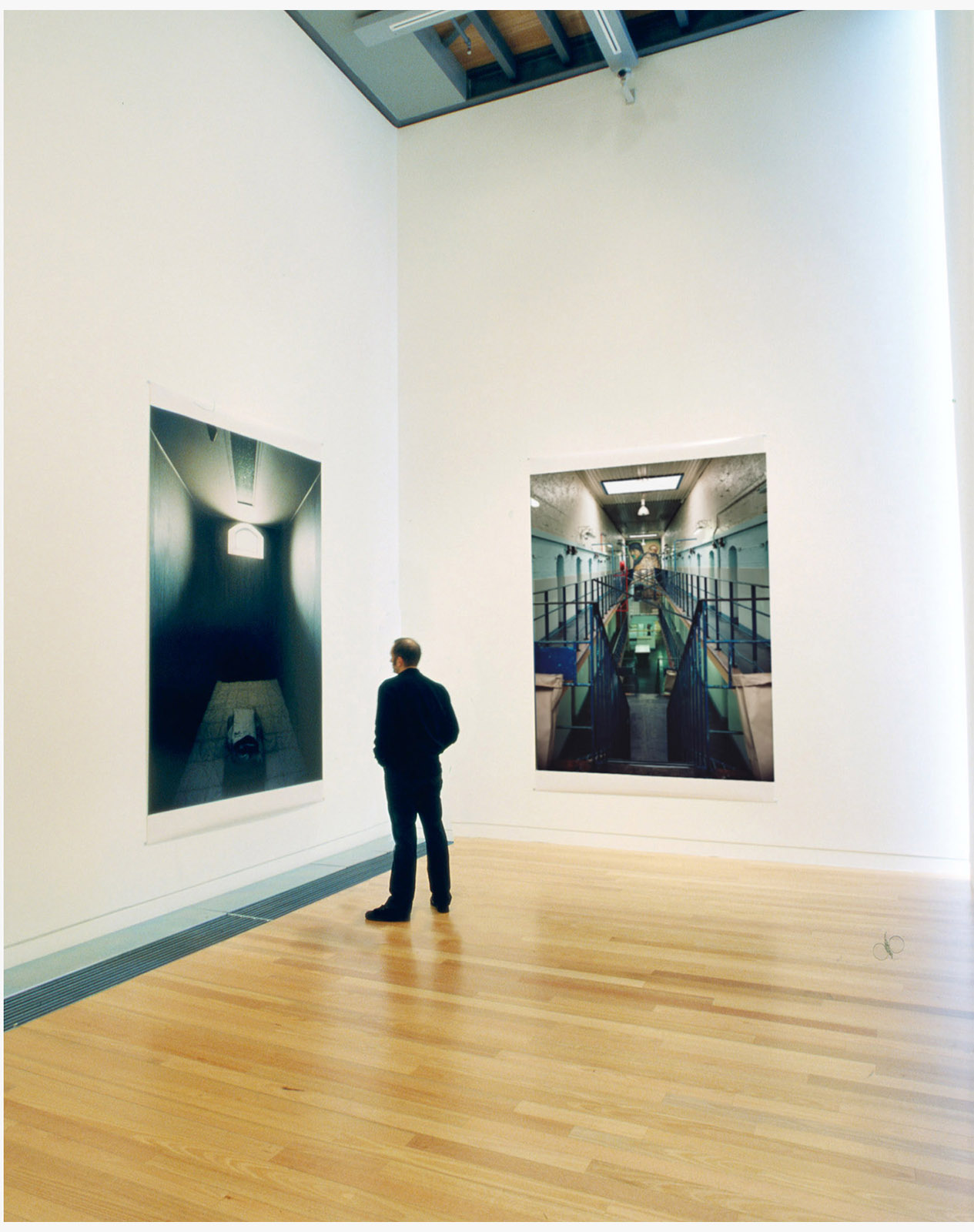





CHAMBERS
For the fate of a boobhead is
That men do him bind
And plant him in the digger
Till he goes out of his mind,
- James K. Baxter
Chambers responds to the idea that photography can transmit the psychic climate of an architectural environment.
Prisons and psychiatric hospitals are the acme of architectural control. As physical manifestations of ideology, heirachy and state control, they are among the purest expressions of power. These spaces force a specific set of experiences upon the inhabitants, whose cumulative emotional responses palpably steep the spaces’ atmosphere.
Produced between 2000 and 2005, Chambers is a comprehensive appraisal of the interiors of the prisons and psychiatric hospitals of Aotearoa New Zealand, both active and abandoned to ruin.
(100+ 8X10 colour negative interior studies + detail studies. First-person narratives.)
“The photographs chart an architecture of despair; they force the viewer to feel the psychological weight of spaces where normative behaviour is regulated.“
2001 / 01 Sep / Review / Aaron Lister / Art New Zealand / Issue 100
“Rotman’s rationale is empirical and his scope comprehensive..... Rotman desires the viewer experience what ‘they claim to know but have not seen’, to face our own assumptions and preconceptions regarding the actualities of imprisonment. His personal mission is to implant these ‘empty’ buildings and cells (and perhaps the sense of fear and horror they instill) onto individual consciousness, thereby inserting them into the collective psyche.”
2001 / Essay / Zara Stanhope / Parallel Worlds / Victoria University Press
“Rotman’s empty rooms are compelling for where they lead our imaginations. The spaces are heavy with narrative possibility and with the absence of humans, we attend to every detail of the room..... These photographs might allow us to come close to realising the potential of the institutional space as metaphor, a kind of echoing of the hollowed-out subjectivity that might reside within it.”
2005 / Essay / Kyla Mcfarlane / Still Present / Victoria University Press
“Every dark scratch and slash of light in these images is a mark of what is both absent and present. In 'Dayroom, Lake Alice Psychiatric Hospital' rows of empty, picked-at chairs sit awaiting bodies, facing out of the frame while directly in front us the light glints off a large wall painting of a typical sublime New Zealand mountain landscape. It's this contradiction between imprisonment and transcendence that makes these images sing.”
2005 / Review / Mark Amery / The Dominion Post
“Rotman’s illuminated light boxes allowed us to experience the emptiness of banishment.”
2005 / Review / Andrea Bell / Un Magazine
2003 / Interiors. McNamara Gallery, Wanganui, Aotearoa New Zealand
2001 / Parallel Worlds. Adam Art Gallery, Wellington, Aotearoa New Zealand & Centre for Contemporary Photography, Melbourne, Australia
2001 / Art Futures. Pataka Gallery, Porirua, Aotearoa New Zealand.
For the fate of a boobhead is
That men do him bind
And plant him in the digger
Till he goes out of his mind,
- James K. Baxter
Chambers responds to the idea that photography can transmit the psychic climate of an architectural environment.
Prisons and psychiatric hospitals are the acme of architectural control. As physical manifestations of ideology, heirachy and state control, they are among the purest expressions of power. These spaces force a specific set of experiences upon the inhabitants, whose cumulative emotional responses palpably steep the spaces’ atmosphere.
Produced between 2000 and 2005, Chambers is a comprehensive appraisal of the interiors of the prisons and psychiatric hospitals of Aotearoa New Zealand, both active and abandoned to ruin.
(100+ 8X10 colour negative interior studies + detail studies. First-person narratives.)
Selected Media:
“The photographs chart an architecture of despair; they force the viewer to feel the psychological weight of spaces where normative behaviour is regulated.“
2001 / 01 Sep / Review / Aaron Lister / Art New Zealand / Issue 100
“Rotman’s rationale is empirical and his scope comprehensive..... Rotman desires the viewer experience what ‘they claim to know but have not seen’, to face our own assumptions and preconceptions regarding the actualities of imprisonment. His personal mission is to implant these ‘empty’ buildings and cells (and perhaps the sense of fear and horror they instill) onto individual consciousness, thereby inserting them into the collective psyche.”
2001 / Essay / Zara Stanhope / Parallel Worlds / Victoria University Press
“Rotman’s empty rooms are compelling for where they lead our imaginations. The spaces are heavy with narrative possibility and with the absence of humans, we attend to every detail of the room..... These photographs might allow us to come close to realising the potential of the institutional space as metaphor, a kind of echoing of the hollowed-out subjectivity that might reside within it.”
2005 / Essay / Kyla Mcfarlane / Still Present / Victoria University Press
“Every dark scratch and slash of light in these images is a mark of what is both absent and present. In 'Dayroom, Lake Alice Psychiatric Hospital' rows of empty, picked-at chairs sit awaiting bodies, facing out of the frame while directly in front us the light glints off a large wall painting of a typical sublime New Zealand mountain landscape. It's this contradiction between imprisonment and transcendence that makes these images sing.”
2005 / Review / Mark Amery / The Dominion Post
“Rotman’s illuminated light boxes allowed us to experience the emptiness of banishment.”
2005 / Review / Andrea Bell / Un Magazine
Exhibitions:
2005 / Still Present: Exploring Psychiatric Institutions in Photography. Adam Art Gallery, Wellington, Aotearoa New Zealand2003 / Interiors. McNamara Gallery, Wanganui, Aotearoa New Zealand
2001 / Parallel Worlds. Adam Art Gallery, Wellington, Aotearoa New Zealand & Centre for Contemporary Photography, Melbourne, Australia
2001 / Art Futures. Pataka Gallery, Porirua, Aotearoa New Zealand.

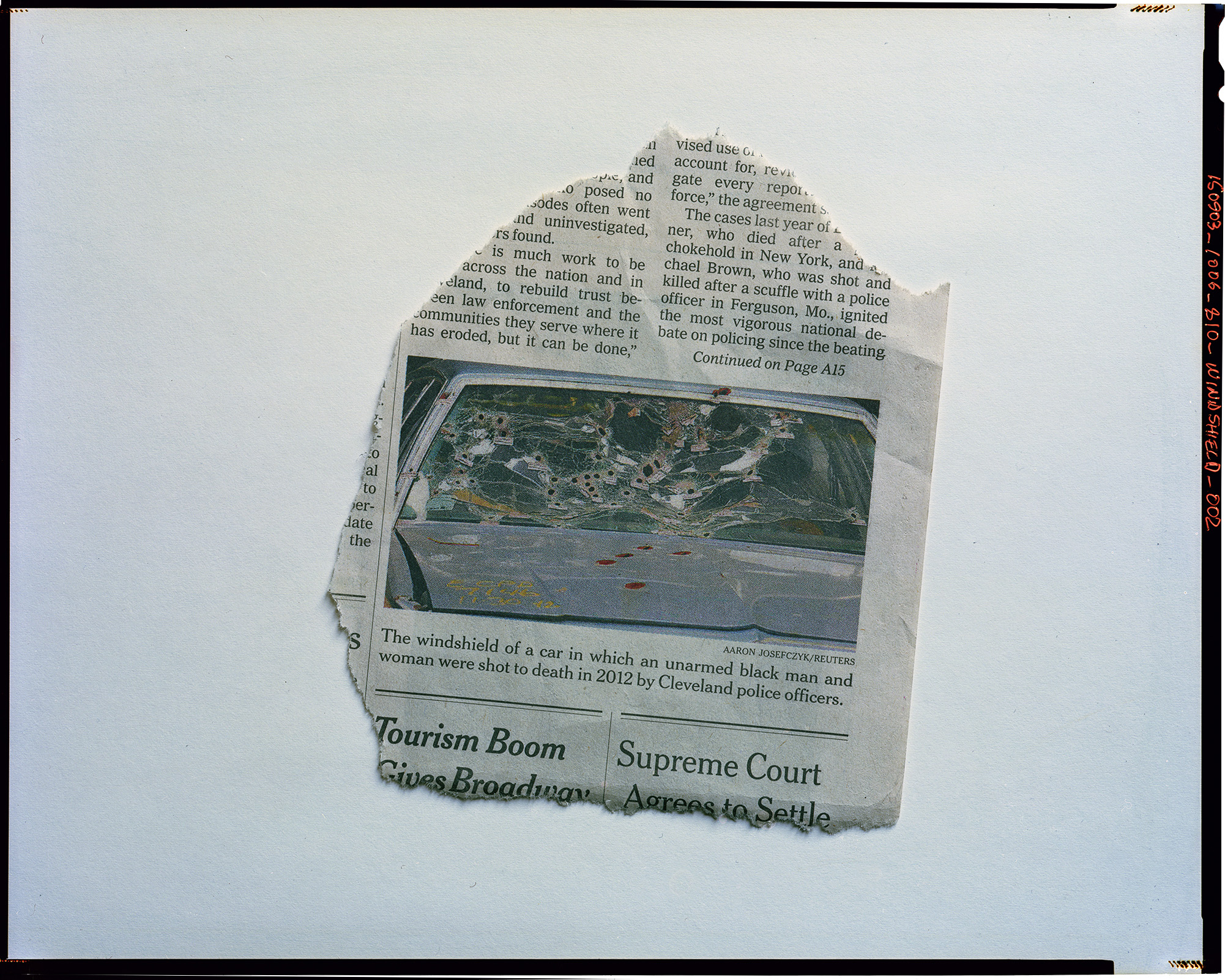






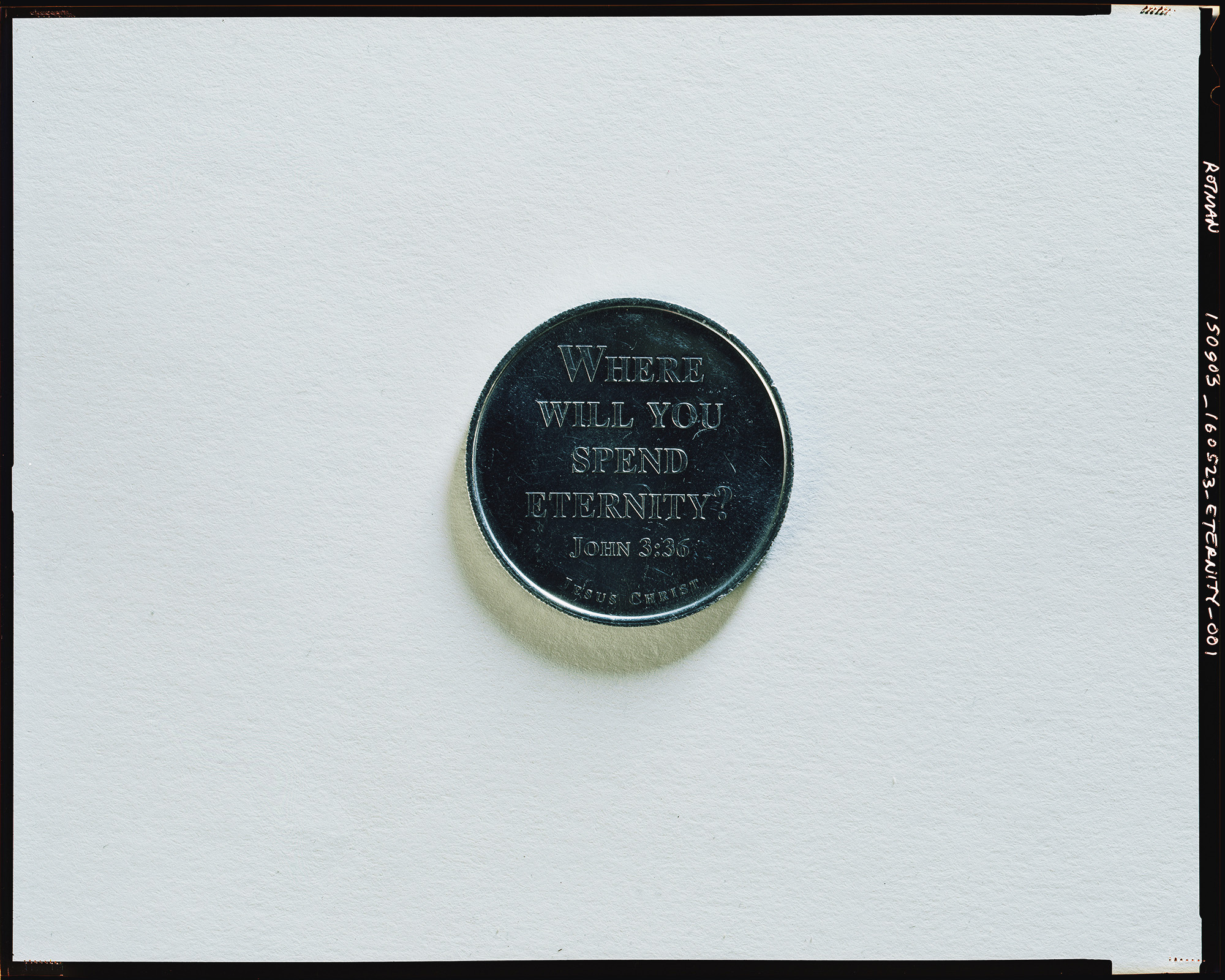

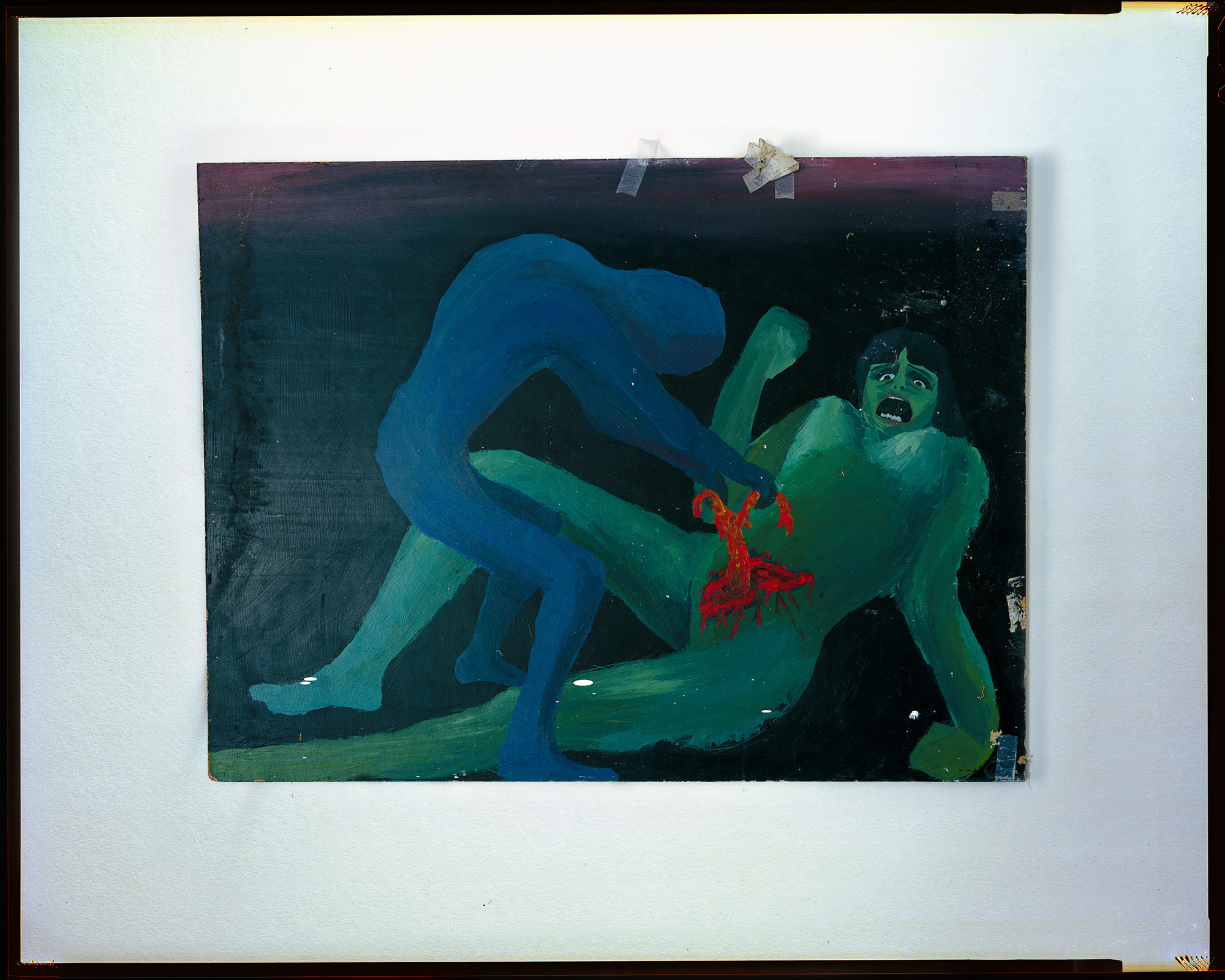
SORTILEGE
"Issues from the hand of time the simple soul..."
- T. S. Eliot
In the early 2010s I came upon scraps, in the New York Times and on the sidewalk, that seemed to augur the years ahead.
"Issues from the hand of time the simple soul..."
- T. S. Eliot
In the early 2010s I came upon scraps, in the New York Times and on the sidewalk, that seemed to augur the years ahead.